How to spend 5 days in the south of Jordan
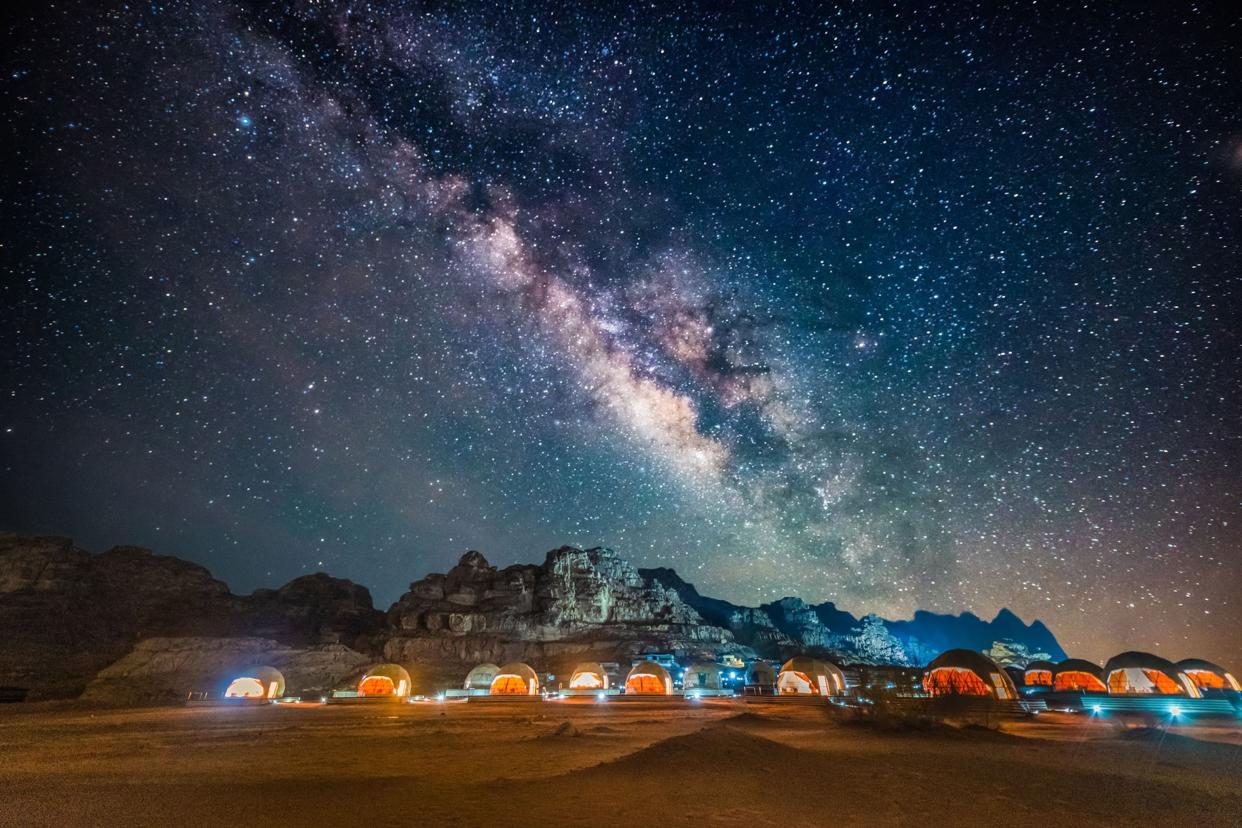
Crisscrossed by ancient caravan routes and pilgrim trails, the south of Jordan has always been a place to wander freely. Some things have changed — visitors now weave across the desert via a network of modern highways — but the Bedouin tradition that dictates no traveller should ever be turned away lives on. Jordan’s Golden Triangle, beginning just over 120 miles south of the capital, Amman, and extending to the coast, captures the country’s cultural and natural diversity — from the ancient cities carved into rock in Petra to the crystal-clear waters off the coast of Aqaba. Spread out over five action-packed days, this itinerary brings together all Jordan’s Golden Triangle has to offer.
Day 1: Aqaba
The long and narrow Gulf of Aqaba pierces the desert like a blue shard of glass. Perched at its tip is Aqaba — Jordan’s only coastal city and the departure point for adventures along the country’s sliver of Red Sea coast. To make the most of a day in Aqaba, plunge into clear, warm waters on a snorkelling or scuba diving expedition in the Aqaba Marine Reserve, one of the world’s northernmost reef systems. Must-see sites include the Japanese Garden and the Cedar Pride shipwreck, home to more than 150 species of coral and marine life, including turtles and dugongs. Both can be accessed from South Beach, a seven-mile stretch of golden sand located a 30-minute drive from the airport.
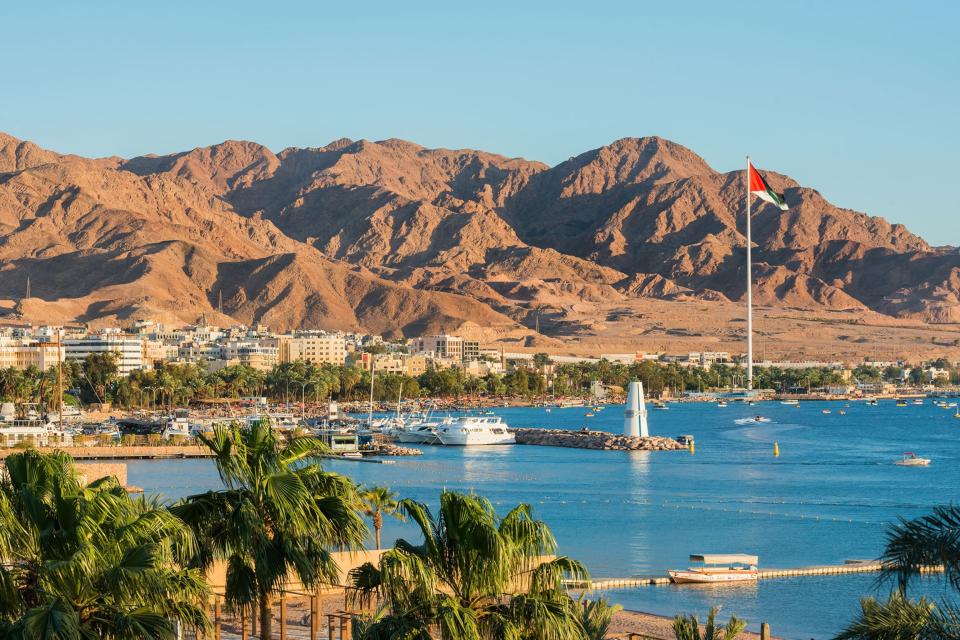
Beyond the shoreline, Aqaba is an energetic port city with a history that goes back to 4000 BCE. Catch the sunset from Aqaba Castle before tucking into a dinner of grilled seafood and sayadieh (a fish and rice dish with cumin) at Mirwas, part of the Royal Yacht Club.
Days 2-3: Petra
With the Red Sea in your rear-view, travel for two hours via the King’s Highway to Wadi Musa, the base camp of choice for the UNESCO World Heritage Site of Petra. Make the Petra Museum your first stop to learn about the Nabataeans, an Arab tribe dating back to the sixth century BCE. The Nabataeans lived as nomads before becoming successful traders, gaining control of key routes that moved spices and incense from Arabia to Egypt and the Mediterranean. Petra began as a main stopping point for Nabataean and foreign traders.
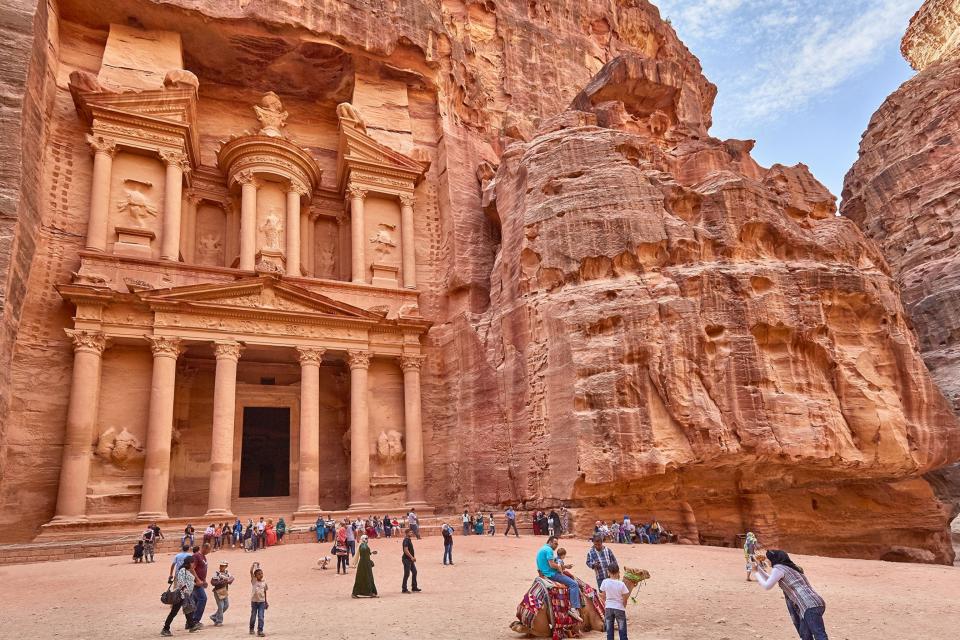
After visiting the museum, set off along the Main Trail, which departs from the visitor centre and covers the essentials in three to four hours. Wind your way between the high walls of the Siq Canyon until The Treasury (Al-Khazneh) comes into view. The first-century CE mausoleum excavated from a sandstone cliff might be Petra’s most iconic and most photographed landmark (it also appeared in the film Indiana Jones and the Last Crusade as the final resting place for the Holy Grail) but it’s only the beginning: press further along the five-mile trail to see the Royal Tombs, the Colonnaded Street and Qasr Al-Bint palace. After walking up an appetite, visit the Petra Kitchen culinary school for a quick primer on Jordanian cuisine before sitting down to a well-earned feast of hot and cold mezze.
The following morning, either return to the Lost City for more tombs, theatres and temples, or travel north to Siq al-Barid (Little Petra), a second site with similar rock-hewn architecture. The Painted House is a must-see site due to its original fragments of mural paintings from the Nabataean era. Return to Petra one last time for Petra by Night (Mondays, Wednesdays and Thursdays only), when the path to The Treasury is illuminated by 1,800 lanterns and each footstep is measured by the rhythms of Bedouin music. Debrief over a glass of Mount Nebo wine at Cave Bar, a 2,000-year-old tomb touted as the world’s oldest drinking hole.
Days 4-5: Wadi Rum
Journey south of Petra again, this time following the Desert Highway — a scenic route surrounded by mountains, valleys and canyons. It takes a little over two hours to reach Wadi Rum, a 183,000-acre desert landscape covered in ochre sand and fringed by granite mesas. Stay in the desert camps that dot the interior — options range from traditional black goat’s skin tents to luxe geodesic domes. Aim for Wadi Rum village and rendezvous with your camp guide, who will drive you the rest of the way in a 4x4 vehicle.
Spend your first afternoon on a Jeep safari, rolling through the dunes to Lawrence’s House (where T E Lawrence lived during the Arab Revolt), the Khazli Canyon petroglyphs and the Um Fruth stone bridge. In the evening, retire to your camp for a feast of zarb — a dish of meat, rice and vegetables slow-cooked underground traditional to the nomadic Bedouin people — beneath a canopy of stars.
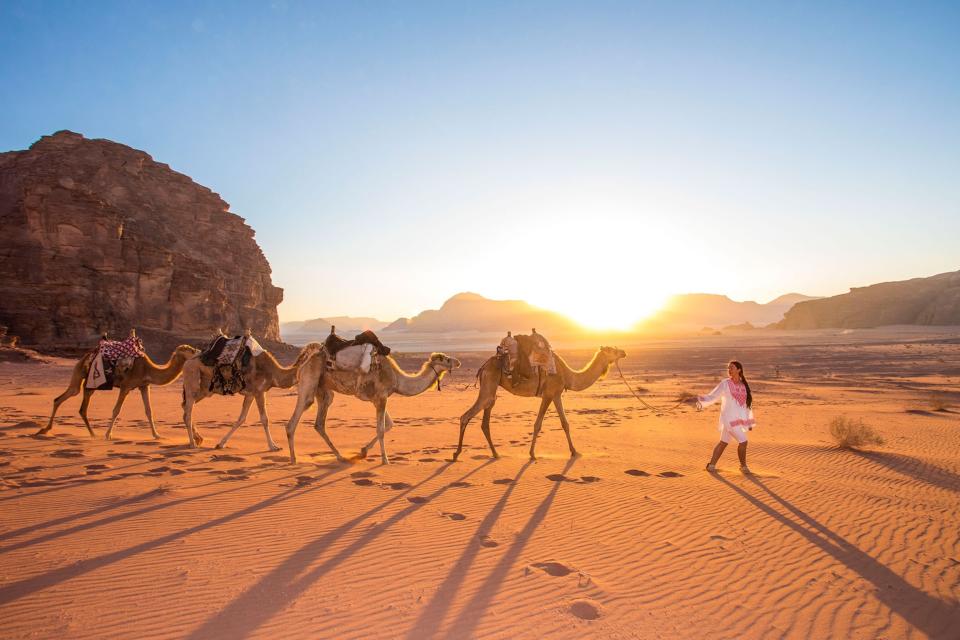
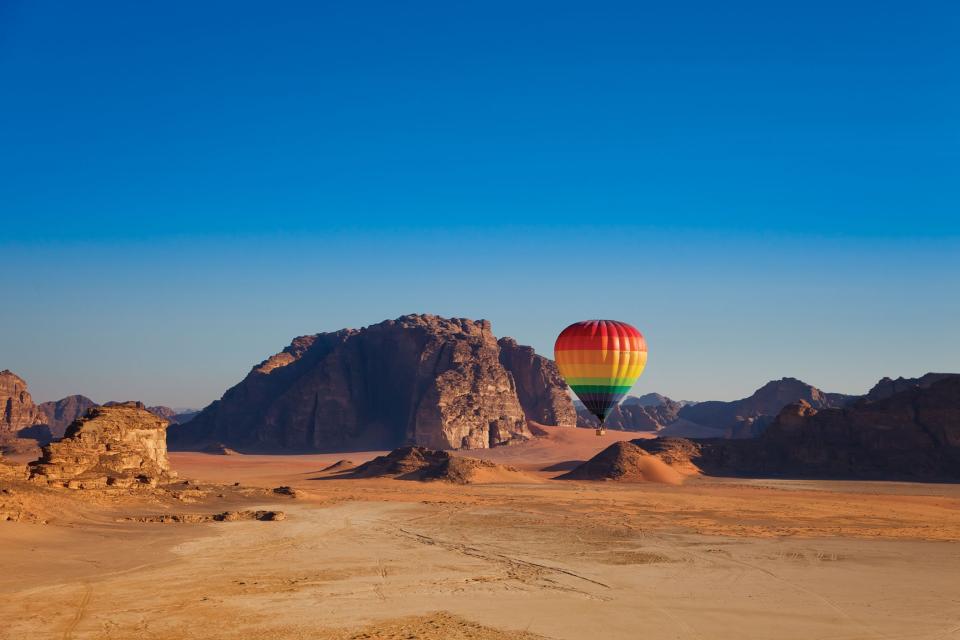
Kick off your final day with a hot air balloon ride over Wadi Rum and survey the contours and colours of the desert from a height of 3,000ft. Sunrise packages booked through Balloons Over Rum include a transfer from most camps. Camel trekking, sandboarding and rock climbing can be organised through your accommodation, or you could hire a guide and hike the southern valley's spectacular Jebel Al-Hash ridge. When night falls, raise a telescope at RumSky Stargazing and scan the heavens while learning about the Bedouin mythology that surrounds the skies.
At the end of your five-day journey through Jordan’s Golden Triangle, either return to Aqaba for more seaside adventures — about an hour’s drive from Wadi Rum — or journey further north to the capital, Amman (approximately 3 hours and 45 minutes by car), for historic sites, vibrant souks and traditional Jordanian cuisine.
This paid content article was created for Visit Jordan. It does not necessarily reflect the views of National Geographic, National Geographic Traveller (UK) or their editorial staffs.
To subscribe to National Geographic Traveller (UK) magazine click here. (Available in select countries only).

